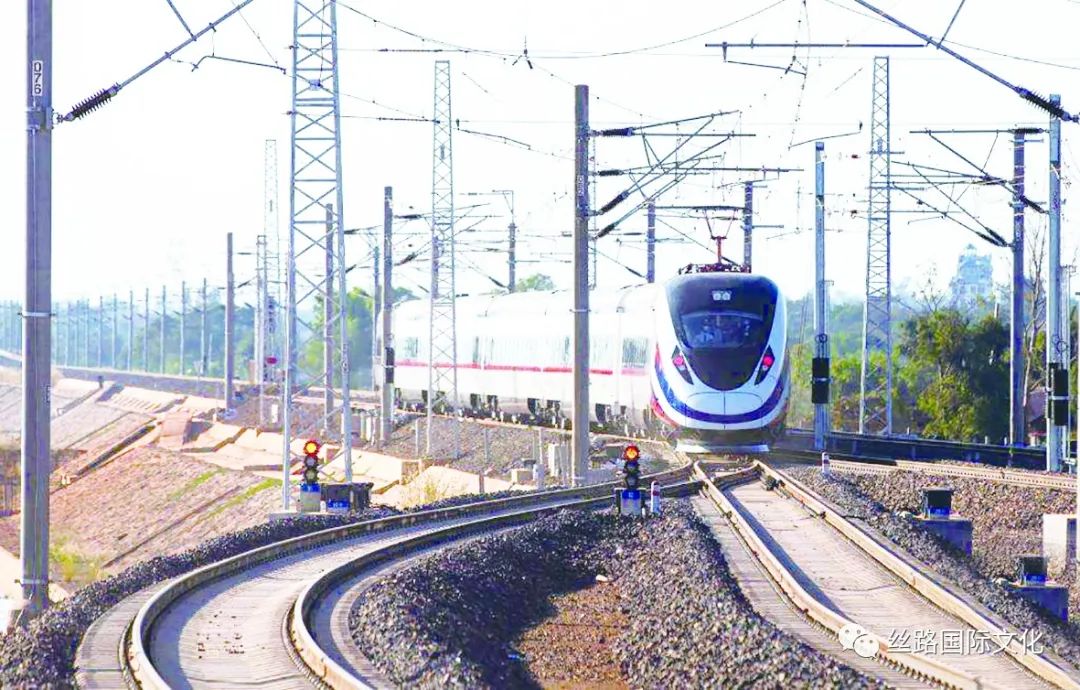即将开通,敬请期待!!
自2013年“一带一路”倡议提出至今十年来,尽管国际形势发生了深刻复杂的变化,多边规则和国际秩序受到冲击,加上三年疫情影响,全球经济复苏仍存在较大压力,但共建“一带一路”取得的成果有目共睹。
先后有151个国家、32个国际组织签署共建“一带一路”合作协议的同时,截至2022年底,中国企业在“一带一路”沿线国家建设的境外经贸合作区累计投资达571.3亿美元,为当地创造了42.1万个就业岗位;在沿线国家承包工程新签合同额、完成营业额累计分别超过1.2万亿美元和8000亿美元,占对外承包工程总额的比重超过了一半。
十年来,共建“一带一路”倡议已成为中国与东盟经贸合作的助推器。中国与东盟货物贸易额占中国货物贸易总额的比重从10.7%上涨到15.5%;2020年东盟首次成为中国第一大贸易伙伴以来,已连续三年保持中国第一大贸易伙伴地位。中国连续14年保持东盟最大贸易伙伴。其中,越南、马来西亚和印度尼西亚为中国在东盟的前三大贸易伙伴。

十年来,共建“一带一路”重点项目不断落地。黑山民众迎来了首条高速公路,斯里兰卡居民喝上了24小时供应的自来水,柬埔寨村民告别了没有电、没有路、与外界隔绝的生活;中老铁路、匈塞铁路等重点线路运营、建设进展顺利,一批“小而美”的农业、医疗、减贫等民生项目相继实施。
十年来,从港口到铁路,一个个项目在欧亚地区构建起走廊通道,让东西方人员和货物往来畅通无阻。
从2011年首个中欧班列成功开行,到2022年中欧班列开行1.6万列、发送160万标箱,西部陆海新通道班列发送货物75.6万标箱,“钢铁驼队”为保障国际供应链、产业链稳定畅通提供了有力支撑。

中国同各方一道完善“一带一路”绿色发展合作机制,与31个共建国家共同发起“一带一路”绿色发展伙伴关系倡议,通过实施“绿色丝路使者计划”,为120多个共建“一带一路”国家培训绿色发展人才3000人次。
“一带一路”倡议十年蝶变,将愿景变为现实。越来越多的国家和地区正通过这一倡议搭乘发展“快车”,与中国共享发展机遇。
作为社会力量中最积极、最有生气的中外青年,要想在当今世界百年未有之大变局中发挥作用,就需要更大范围、更高水平地参与国际竞争与合作。而要让自己具备充足的底气,在全球化进程中、在不同的国际舞台上发出自己的声音,发挥青年生力军的作用,则需要有大视野。
十年来的实践证明,“一带一路”倡议不仅丰富了国际发展合作的机制和内容,为沿线国家的发展增添了重要动力,也为中外青年认识世界提供了更加宽阔的视野,提供了发挥自身作用的重要平台。
机遇伴随挑战,责任蕴含担当,中外青年当自强!
译文
In the 10 years since the Belt and Road Initiative was proposed in 2013, the international situation has undergone profound and complex changes, multilateral rules and the international order have come under pressure, and global economic recovery is still under great pressure due to the impact of the pandemic in the past three years. Yet, the achievements of the Belt and Road Initiative are there for all to see.
While 151 countries and 32 international organizations have signed agreements on Belt and Road cooperation, by the end of 2022, Chinese enterprises had invested a total of US$57.13 billion in overseas economic and trade cooperation zones in countries along the Belt and Road, creating 421,000 local jobs. The total value of new contracts and turnover of contracted projects in the Belt and Road countries exceeded US$1.2 trillion and US$800 billion respectively, accounting for more than half of the total value of overseas contracted projects.
Over the past decade, the Belt and Road Initiative has become a booster for China-ASEAN economic and trade cooperation. The proportion of China- ASEAN trade in goods in China's total trade in goods increased from 10.7% to 15.5%. ASEAN has remained China's largest trading partner for three consecutive years since it first became China's largest trading partner in 2020. China has been ASEAN's largest trading partner for 14 consecutive years. Among them, Vietnam, Malaysia and Indonesia are China's top three trading partners in ASEAN.
Over the past decade, major Belt and Road cooperation projects have been implemented. People in Montenegro got their first highway, people in Sri Lanka got 24-hour tap water, and villagers in Cambodia got rid of their lives without electricity, roads and the outside world. Smooth progress has been made in the operation and construction of key lines such as the China-Laos Railway and the Budapest-Belgrade Railway, and a number of small but wonderful livelihood projects in agriculture, health and poverty reduction have been implemented.
Over the past decade, projects have created corridors across Eurasia, from ports to railways, allowing people and goods to move freely between East and West.
From the successful launch of the first China-Europe freight train in 2011 to the launch of 16,000 China-Europe freight trains and the delivery of 1.6 million TEus in 2022, and the delivery of 756,000 TEUs of goods on the Western Land and Sea New Corridor, the "steel camel train" has strongly supported the stability and smooth flow of the international supply chain and industrial chain.
China has worked with other parties to improve the Belt and Road cooperation mechanism for green development, launched the Belt and Road Green Development Partnership Initiative with 31 co-contributing countries, and trained 3,000 green development professionals for over 120 Belt and Road co-contributing countries through the Green Silk Road Envoys Program.
The Belt and Road Initiative has been transformed over the past decade, turning its vision into reality. More and more countries and regions are boarding the "express train" of development through this initiative and sharing development opportunities with China.
As the most active and dynamic social forces, Chinese and foreign youth need to participate in international competition and cooperation on a larger scale and at a higher level if they want to play a role in today's world, which is undergoing profound changes unseen in a century. In order to have sufficient confidence to make their voices heard in the process of globalization and on the different international stages, and to give full play to the role of young people, it is necessary to have a broad vision.
The past decade has proved that the Belt and Road Initiative has not only enriched the mechanism and content of international development cooperation and given important impetus to the development of countries along the routes, but also provided a broader vision for young people in China and abroad to understand the world and an important platform for them to play their role.
Opportunities with challenges, responsibility implies responsibility, young people at home and abroad should be self-improvement!
作者 史志钦:清华大学“一带一路”战略研究院执行院长、丝路百科杂志社执行总编辑。本文为《丝路百科》杂志2023年第4期卷首语
审校:张红霞
编辑:岳零然
供稿:史志钦
执行副总编辑:季昌仁
监制:杨东平 徐志强 蒋 涛
丝路国际智库理事长:杨邦杰
丝路百科杂志社理事长:白庚胜
丝路国际智库专家委员会主任:顾伯平